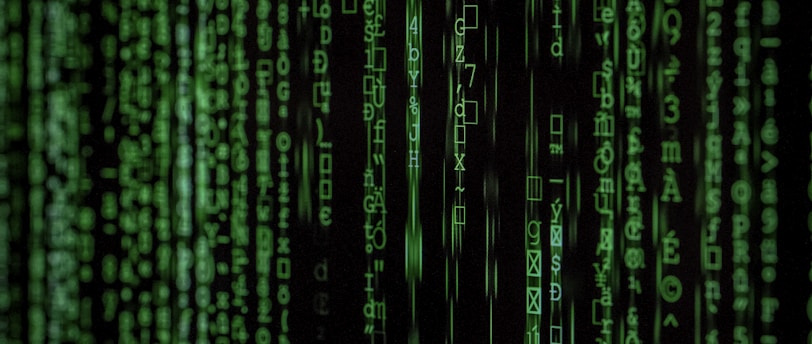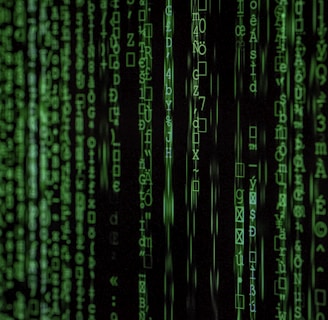Artificial Intelligence and Numbers
Planning, Operations, Result
3/27/20252 min read


Written By ChatAI
Introduction:
A New Alliance Between Humans, Numbers, and Machines
Numbers have always been the foundation of human knowledge. They help us measure, understand, predict, and build. Arithmetic, geometry, algebra, and analysis are not just school subjects—they power our technology, finance, science, and now, our artificial intelligence.
AI is deeply rooted in the world of numbers. It calculates, compares, models, learns, and optimizes. In this post, we explore how AI and mathematics interact—and how this relationship is reshaping human understanding and decision-making.
1. Numbers: The Raw Material of Artificial Intelligence
Basic operations: Arithmetic
Addition, subtraction, multiplication, division—AI is built on these. For example, neural network learning relies on multiplications and additions during weight updates.Number theory and algorithms
Prime numbers, divisibility, greatest common divisors—these concepts power encryption and cybersecurity, where AI plays a critical role.Matrix operations and linear algebra
AI "speaks" in matrices. Image recognition, voice processing, and predictive modeling rely heavily on matrix multiplication and transformations.
2. Geometry in AI: Spatial Awareness and Visual Intelligence
3D geometry and machine vision
Autonomous vehicles use AI to navigate the world in three dimensions. They rely on vectors, distances, angles, and trigonometric functions.Topology and shape recognition
AI learns to identify objects in images by understanding shapes, contours, symmetry, and curvature.Coordinate systems and mapping
AI maps the world in digital space using coordinate transformations—crucial for GPS, robotics, and visual tracking.
3. Set Theory, Probability, and Statistics: Foundations of AI Reasoning
Probability and uncertainty
Will it rain tomorrow? AI models weather using Bayes’ Theorem, probability distributions, and variance.Statistical learning
A major branch of machine learning is built on statistics: averages, medians, modes, and regressions.Set operations
AI works with classifications and groups—unions, intersections, and complements determine how it categorizes data.
4. Algebra, Functions, and Optimization in Machine Learning
Functions and derivatives
AI models adjust by computing the gradient (derivative) of loss functions—the core of gradient descent.Logarithms and exponential functions
Activation functions (sigmoid, softmax) in neural networks often involve exponential and logarithmic math.Abstract algebra
Concepts like groups, rings, and fields form the basis of emerging AI models, including those in quantum computing.
5. The Human–Number–AI Relationship
Interpreting numbers, not just calculating
AI doesn’t just compute—it understands patterns and correlations in numerical data, even in natural language.Assisting learning
AI-powered platforms like Khan Academy or Socratic help students grasp complex mathematical problems more intuitively.From emotion to abstraction
While humans often decide based on instinct or emotion, AI offers objective, data-driven decisions—a new perspective on problem-solving.
6. Challenges: Misuse and Misunderstanding of Numbers
Biased data
If numbers are flawed, so is the AI’s conclusion. Bad data leads to bad models, no matter how advanced the math.Blind trust in numbers
Numbers seem objective, but they reflect human-designed models—every equation has assumptions.Algorithmic bias
AI can mathematically replicate human prejudice if trained on biased datasets.
7. Opportunities:
A New Era of Mathematical Discovery
Faster calculations
AI performs complex calculations in seconds—work that would take humans hours or days.Scientific breakthroughs
AI helps scientists model chemical reactions, biological systems, and physics equations with mathematical precision.Creative mathematics
AI is beginning to suggest new theorems, patterns, and even proofs, as seen in projects like DeepMind’s AlphaTensor and Minerva.
Conclusion:
Numbers, Humans, and AI—A Shared Language
Numbers have always been the bridge between thought and reality. Artificial Intelligence is the architect of that bridge in the modern age. It doesn’t just compute—it interprets, learns, models, and discovers.
For humans, numbers are a tool to understand the world. For AI, numbers are the very language of existence. Together—human, number, machine—we are entering a new era of discovery where no one part can succeed alone.
